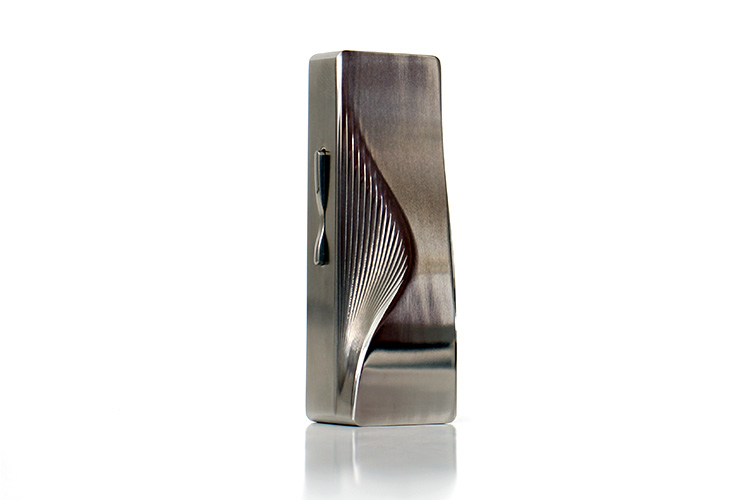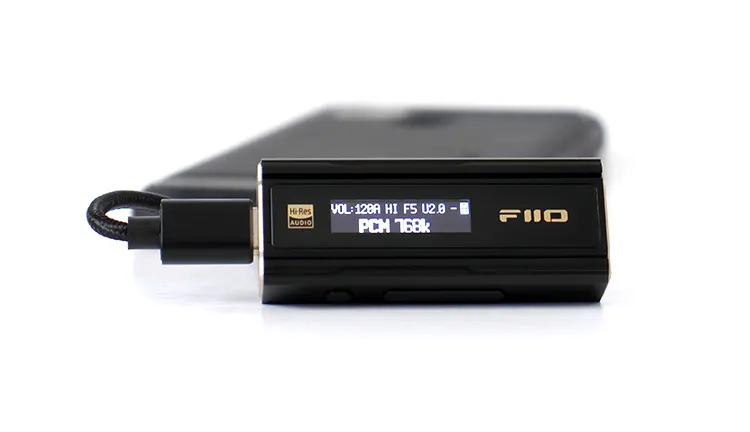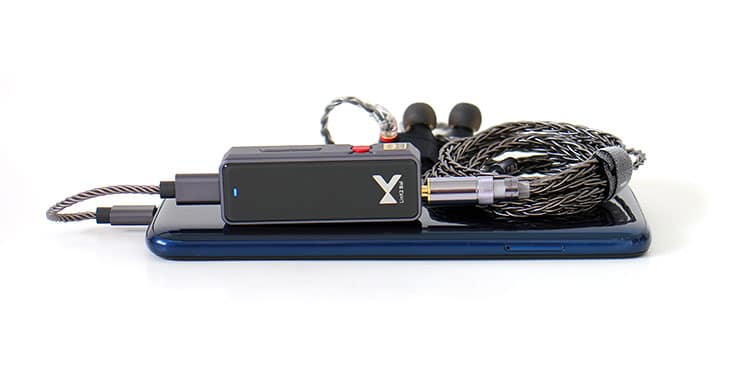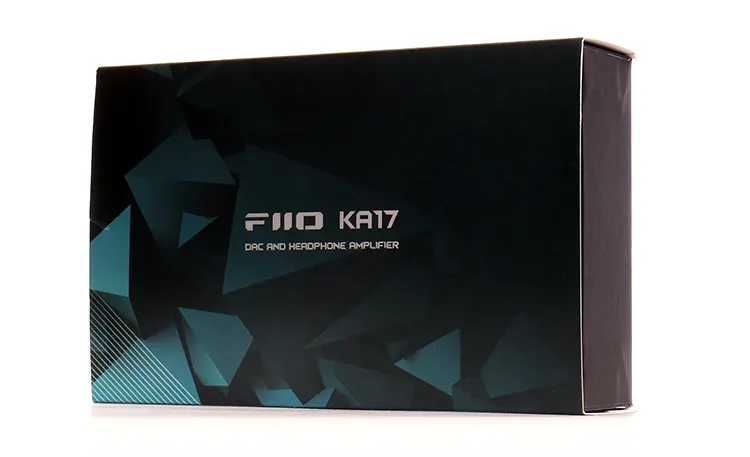Synergy
Power
The FiiO KA17 is an all-around good driver. It has the delicacy and low noise floor that’s needed to properly drive IEMs, but it can also drive most headphones in today’s market well enough to produce high levels of volume.
The doubling up on the DC power source to up the output power is a good idea. It does what FiiO claims it does but they managed to keep hiss at an undetectable level even though there are two power sources which is a tricky venture. It’s the result of a carefully designed power section.
I did use iFi Audio’s iPower adapter that promises to deliver clean power and I suggest feeding this dongle with a quality 5-volt adapter if you use the D mode.
However, if you do use one purchased at a gas station you might mar the output but not necessarily so since the KA17 uses a multistage power circuitry that cleans things up before voltage hits the circuitry.
This model runs a bit warm and it seems to not have any mute implementation which is rather common implementation nowadays.
The circuitry seems to stay active all the time even though there’s no music playing through the unit. It seems to stay warm constantly and rise in temperature while listening to music at loud levels. It does just okay for battery consumption but there is a noticeable amount of battery drain.
Pairings
The beauty behind the FiiO KA17 dual power design is that it raises the bar and improves synergy because it has a dark background on the lower gain setting but it’s powerful enough to drive some demanding headphones.
I don’t have any of their full-sized headphones on hand but do have many of their IEMs and of course, they’re all driven well by this dongle but it’s also a heavy hitter.
All my under $500 price tag headphones were driven acceptably well. The KA17 paired well with the HE400se and even better with the Sundara since they seem to be easier to drive correctly.
The KA17 would make a good buy for a first-time audiophile who is strapped for cash since the KA17 can easily integrate itself into a desktop environment but you can also go portable on the fly. It can also fill a portable void for the more ardent critic.
Select Comparisons
MOONDROP MOONRIVER 2: Ti
Technical
The original MOONRIVER 2 was a hit and perhaps it was attractive to buyers because of its orthodox but creative shape and construction. However, MOONDROP took it to another level with the introduction of the MOONRIVER 2: Ti.
MOONDROP also promised and delivered good audio quality by implementing an updated chipset. They traded the original CS43131 set for a pair of CS43198, again, within a dual mono circuitry design. MOONDROP took a different route on the input side and used a CT7691 USB bridge from Comtrue.
The amplification section uses a set of LM683D chips that although not as beefy as the amplification section of the KA17, supplies an ample 250mW per side on the balanced side.
Are there any other major technical differences? The MOONRIVER 2: Ti has the same codec capability except for DSD which can only reach DSD256 levels. The KA17 can handle MQA, not the 2: Ti.
Design
The MOONDROP MOONRIVER 2: Ti is a work of art made from a solid piece of TC4 Titanium alloy with what MOONDROP calls a ripping flow design. It belongs inside a jewelry glass case on display. Photos don’t do it justice.
Speaking of glass, the MOONRIVER 2: Ti doesn’t have a digital display, nor does it have the plethora of features found on the KA17 but it does sport a clear glass that gives you a glimpse of what’s inside.
The MOONRIVER 2: Ti is built like a brick and so is the KA17 but the 2: Ti is noticeably heavier even though its stature is smaller. The 2: Ti does have rounded corners and it feels better in the palm. One big drawback is that you will feel the need to constantly polish the 2: Ti because it’s a fingerprint and smudge magnet.
The artful design and small stature of the 2: Ti does have a couple of drawbacks. Not only is there a lack of a menu but there is also a lack of supporting apps or any sound-shaping capability.
You can always use your favorite player’s EQ section but the MOONRIVER 2: Ti doesn’t come with any sound-shaping capability.
Performance
Power-wise, The FiiO KA17 is the clear winner but only when the D mode is engaged and extra power is fed to it by use of an extra power source which is unique within this comparison and this segment. Only the FiiO unit has that second USB-C connection.
But if you compare them on an equal basis and disable the D mode then both dongles perform at the same level power-wise if you use either the balanced, or unbalanced output port.
There are subtle differences within the soundstage especially when it comes to micro-staging. The MOONRIVER 2: Ti has what I call underfill in that it displays sound over most of the soundscape but misses to fill in some areas. The KA17 produces a fuller soundstage.
FiiO KA5
Technical
The FiiO KA5 was the top dog in FiiO’s dongle DAC lineup up to now and is still one of my favorite dongles in this price tier. It’s equipped with an opamp-based amplifier section consisting of dual SMG8261s.
It’s also equipped with dual CS43198 DACs in a chassis of smaller stature, an OLED display, and a 6-layer gold immersion PC board. The KA17 goes a step further by using two separate boards to isolate the analog and digital stages from one another.
The KA5 also works with FiiO’s Control app and there’s more to do within the app when connected to the KA5 compared to the KA17 but there’s a finer level of volume control. There’s the 120-step feature plus a better equalization section that not only is it a Parametric type but it offers more presets, user-defined or factory preset alike.
Digital format capabilities are similar except that the KA17 can go up to DSD512, meantime, the KA5 can do DSD256 tops. Only the KA17 handles MQA full decoding.
Design
Again, the KA17 is rather large so if size matters to you then the smaller stature of the KA5 might be more appealing to you. Both these models present sharp corners and some sharp edges so there’s no getting around that with either model but the KA17 is the nicer one as far as build quality.
The KA5 has an old-school look and has cooling fins on its sides resembling an automotive amplifier. Perhaps that’s what FiiO was going for. The KA17 on the other hand resembles the BTR7 in appearance except for the large X pattern up front.
But the rest of the design is somewhat similar. Aluminum CNC construction, tempered glass, and a similarly sized OLED screen on both units.
Both models have dual headphone outputs composed of a 3.5mm and a 4.4mm balanced jack, a USB-C connection for the input and power plus an onboard volume control alongside a multi-use button that gives access to the features within the onscreen menu.
Performance
Add 10 decibels of dynamic range and add size to the overall soundstage and you get the KA17 over the KA5 which produces a softer demeanor and tonality. It has a relaxed tuning that might work best if long listening sessions are the norm.
The KA17 is more forward and it’s probably a product of the THX amplification section and a common trait of the same.
Imaging is also produced differently. The KA5 stage is smaller, personal but just as accurate. The KA17 produces a wider panorama and has the additional capability of producing a taller plus a deeper, or further out projection.
xDuoo Link2 bal
Technical
xDuoo is best known for other products like tube amplifiers but they also produce the Link2 bal dongle DAC which is a gem in this segment. It uses dual CS43131 chips with a Texas Instruments LM27762 amplifier section.
They also use a charge pump LDO that claims an efficiency of 85% which is ideal to implement in low-power-consumption gear.
The Link2 bal is unique in a couple of ways but it lacks features like an app, equalizer, or digital filters. This model offers no firmware updates either. It’s an as-is design but the Link 2 BAL doesn’t have any bugs or anomalies that I know of. It works well all the time and is a very stable model.
There’s an onboard volume control, a multifunction button, plus two other switches for the two-step gain and a USB 2.0 to 1.0 switch. The multi-switch could have been given these features and those two switches could have been given other functions raising the bar.
Design
The xDuoo Link2 bal uses a similar headphone out configuration consisting of a 3.5mm and a 4.4mm balanced connection plus the conventional USB-C input connector.
The body style is robust and simultaneously pleasant and is absent of sharp edges and corners. It’s also made of aluminum run through a CNC with a tempered glass fascia. The Link2 bal also has onboard volume controls.
Performance
Again, if you consider power output alone, then the KA17 will win the battle. The Link2 bal has a neutral, full-bodied sound signature that presents the listener with a crisp aspect in treble and midrange while simultaneously coming across as warm-bodied due to its full-bodied bass response.
It seems the KA17 has an aggressive edge and seems to produce sound with a higher level of presence. Both models present the listener with lots of nuanced detail but the KA17 has the larger and the most precise soundstage.
The Link2 bal has no sound shaping features and if you like to tweak the KA17 will be the more accommodating unit since it comes with a Parametric equalizer and digital filters. Simplicity versus complexity is your choice.
Our Verdict
The FiiO KA17 dongle DAC is surprisingly good and is quickly becoming my favorite dongle DAC in this price segment.
It has a delicate side in that it can drive IEMs in a hiss-free manner but at the same time, it can supply power enough to drive some demanding headphones.
This versatility does not come by chance or luck. It comes from a team of audio gear designers who put their minds together in an innovative way to bring us a piece of gear like the KA17. I also think the KA17 will outsell the KA5 since it offers MQA and more power on tap.
I have nothing to complain about except for sharp physical cornering on the unit. Other than that, the FiiO KA17 wins me over not only because of its drivability capability but because it also stages well and has a handful of features, all within an affordable package.
FiiO KA17 Technical Specifications
- Model: KA17
- Color: Black and Blue
- Weight: About 33.5 g
- Driver-free mode: Supported
- Gain level: Low/high
- Display: 0.91-inch OLED display
- Max supported sample rates: PCM 768kHz/32bit DSD SD512 Native DOP256 MQA
- Hardware solution: 2 ES9069Q / XMOS XU316
- Dimensions: About 64×27.7×12.7mm
- Desktop Mode: Supported
- Channel balance: ≤0.2db
- Recommended impedance: PO 8 to 150Ω / BAL 8 to 300Ω
- Output: Up to 650mW







